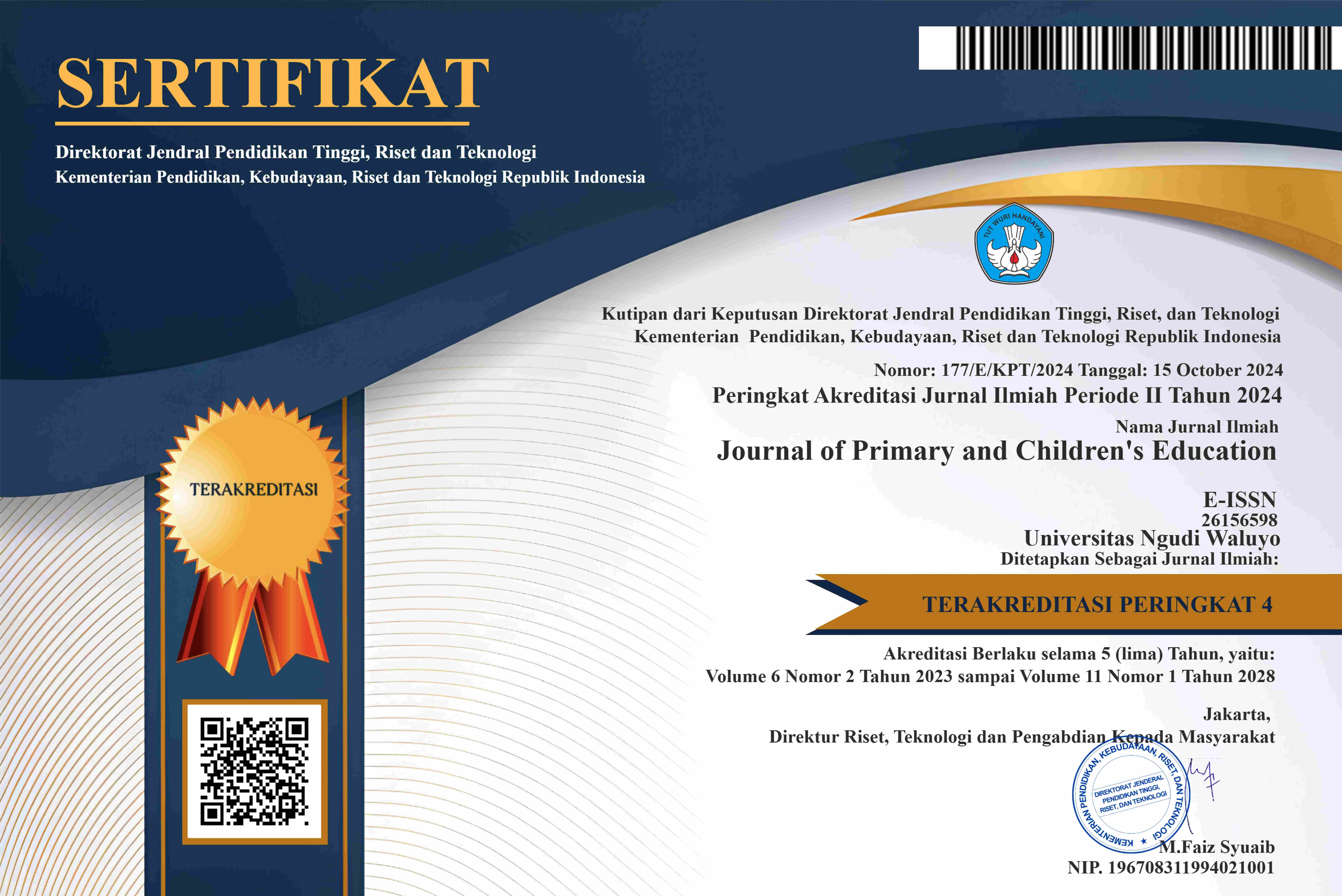Penerapan Model Pembelajaran Jigsaw Sebagai Sarana Untuk Problem Solving Bagi Mahasiswa Pada Mata Kuliah Ilmu Pendidikan
DOI:
https://doi.org/10.35473/jnctt.v2i2.223Abstract
The objectives of this study are: 1) to know the implementation of the Jigsaw learning model that is used as a means for problem solving for students in educational science courses, 2) To measure the success rate of implementing the Jigsaw learning model that is used as a means for problem solving education science courses, 3) To find out student responses related to the implementation of the Jigsaw learning model that is used as a means for problem solving for students in educational science courses. This research method applies an experimental method with a type of non-equivalent control group design in answering the research problem formulation. The research location was at the Nahdlatul Ulama Islamic University of Jepara, with a population of 30 students. Data analysis techniques used to calculate the results of research using t-test (paired sample t-test and independent sample t-test). Instruments for collecting data using observation and questionnaires. The results of this study include: 1) the continued impact of this is a different level of understanding between active students and students who are passive in completing tasks / problems. active students will of course be better able to master the material, whereas students who are passive will find it difficult to carry out the material by using learning models like this (problem solving). This is indicated by the value of learning outcomes, observation sheet data problem solving process shows that 71% of students in meetings II and II, and 76% of students at meetings IV and V can attend learning well; 2) Based on the statistical data generated, it can be concluded that the initial capability data of the 3 classes of 2PGSD A.1 has identical means (not significantly different) because Sig. (0.232)> 0.05, and F count (1.479) < T table (3,072); and 3) students taught by using the Jigsaw learning model that is used as a means for problem solving for students in Educational Sciences courses can be setup cooperatively to provide higher learning outcomes compared to students taught with classical learning models as a means for problem solving that is set individually. This proves that the Jigsaw learning model through problem solving activities can provide strength that is able to support the improvement of learning outcomes and critical thinking skills and build an active role for student learning.
References
Albert & Antoni. 2000. Impulsive/Careless Problem solving Style as Predictor of Subsequent Academic Achievement. A. Rodrõ Âguez-Fornells, A. Maydeu-Olivares / Personality and Individual Di€erences 28 (2000) 639-645.
Azizah, U. 2003. Penerapan Model Kooperatif Melalui Pengembangan Bahan Pembelajaran Kimia Dasar. Jurnal Matematika, Ilmu Pengetahuan Alam dan Pengajarannya. 32(2).
Baharuddin & Esa Nur Wahyuni. 2012. Teori Belajar dan Pembelajaran. Jogjakarta: AR RUZZ MEDIA.
Cooper, M.M. 1995. Cooperative Learning, An Approach For Large Enrolment Course. Journal of Chemical Education. 72(2): 162-168.
Fathurrohman, Pupuh & M. Sobry Sutikno, M.Pd. 2011. Strategi Belajar Mengajar, Strategi
Mewujudkan Pembelajaran Bermakna Melalui Penanaman Konsep Umum & Islami. Bandung: PT. Refika Aditama.
Handayani, Sri. 2008. Efektifitas penerapan model pembelajaran berbasis masalah (problem based learning) dan pembelajaran kooperatif (cooperative Learning) tipe Jigsaw untuk meningkatkan aktivitas belajar, hasil belajar dan respon belajar siswa pada mata perlajaran ekonomi di SMA Negeri 2 Malang. Skripsi (Sarjana)--Universitas Negeri Malang. Program Studi Pendidikan Ekonomi, S1 Program Studi Pendidikan Ekonomi.
Trianto. 2010. Mendesain Model Pembelajaran Inovatif –Progresif. Jakarta: Kencana
Sugiyono. 2015. Metode Penelitian Pendidikan. Bandung: Alfabeta.
Pontoh, Hanafi. 2016. Penerapan Model Pembelajaran Jigsaw Untuk Meningkatkan Hasil Belajar Ilmu Pengetahuan Sosial (IPS) Siswa Kelas V SD Inpres Salabenda Kecamatan Bunta. Jurnal Kreatif Tadulako Online Vol. 4 No. 11.
Sihotang, Ijah Mulyani. 2015. Model Pembelajaran Jigsaw Dalam Upaya Meningkatkan Hasil Belajar Akuntansi. Prosiding Seminar Nasional Pendidikan Akuntansi dan Keuangan “Pengembangan Pendidikan Akuntansi dan Keuangan yang Berkelanjutanâ€.
Published
How to Cite
Issue
Section
License
Copyright notice:
- Authors retain copyright and grant the journal right of first publication with the work simultaneously licensed under Creative Commons Attribution License that allows others to share the work with an acknowledgement of the work's authorship and initial publication in this journal.
- Authors are able to enter into separate, additional contractual arrangements for the non-exclusive distribution of the journal's published version of the work (e.g., post it to an institutional repository or publish it in a book), with an acknowledgement of its initial publication in this journal.
- Authors are permitted and encouraged to post their work online (e.g., in institutional repositories or on their website) prior to and during the submission process, as it can lead to productive exchanges, as well as earlier and greater citation of published work (The Effect of Open Access)







